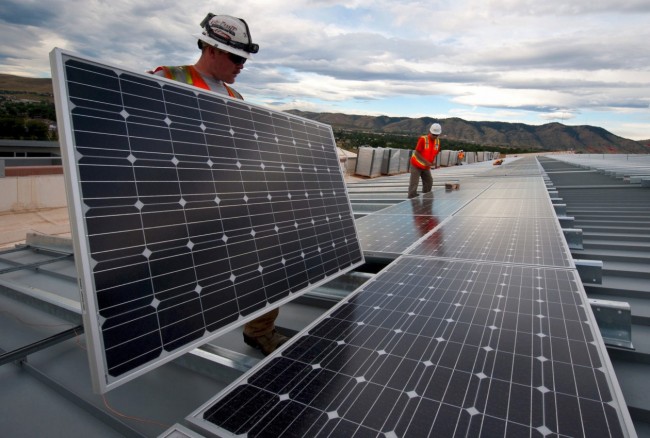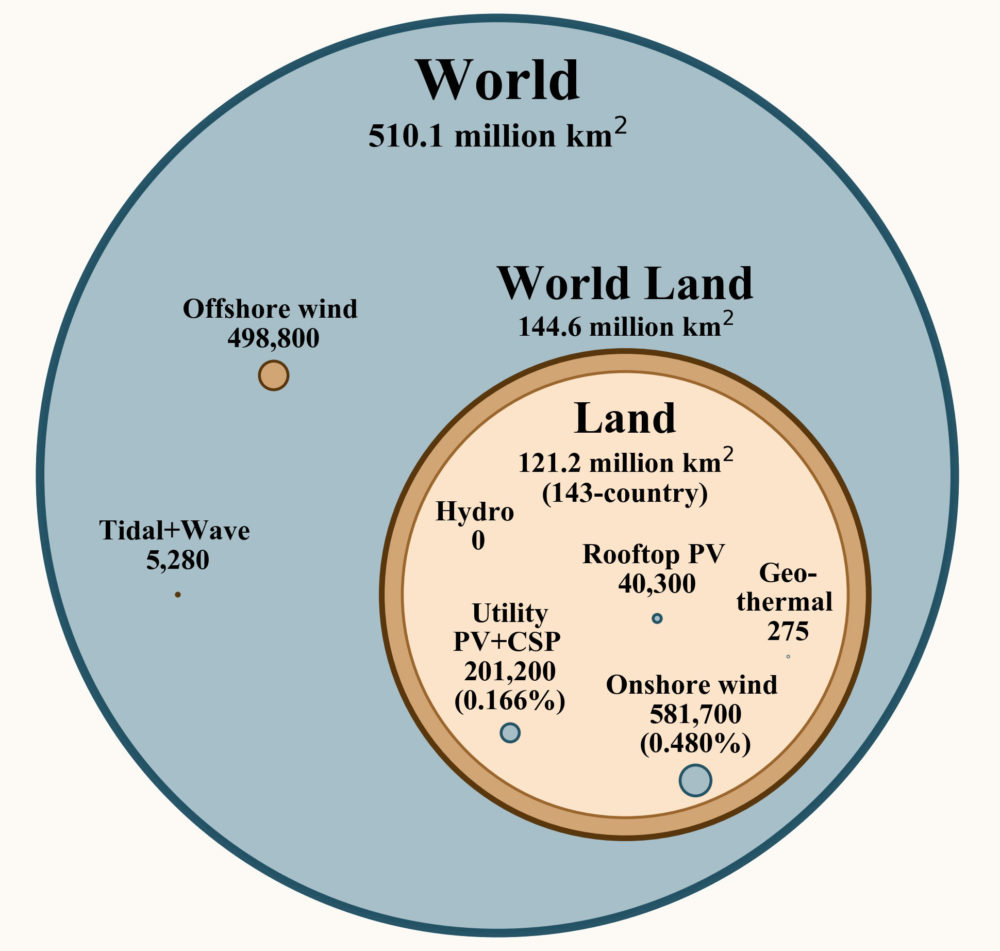The Global Price Tag for 100 Percent Renewable Energy: $73 Trillion
E360 DIGEST
YaleEnvironment360

A global effort to transition to 100 percent renewable energy by 2050 would cost nations $73 trillion upfront — but the expense will pay for itself in under seven years, according to a new report from researchers at Stanford University. The study also found that the shift to a zero-carbon global economy would create 28.6 million more full-time jobs than if nations continue their current reliance on fossil fuels.
The report, published in the journal One Earth, presents detailed roadmaps for how 143 countries that account for 99.7 percent of all global greenhouse gas emissions could successfully transition to 100 percent renewable energy by 2050. The report is a follow up to a 2015 study by the same research team that generated state-by-state plans for the United States, findings that helped lay the groundwork for the Democratic Party’s proposed Green New Deal.

“There are a lot of countries that have committed to doing something to counteract the growing impacts of global warming, but they still don’t know exactly what to do,” Mark Jacobson, a civil and environmental engineer at Stanford and lead author of the new report, said in a statement. “How it would work? How it would keep the lights on? To be honest, many of the policymakers and advocates supporting and promoting the Green New Deal don’t have a good idea of the details of what the actual system looks like or what the impact of a transition is. It’s more an abstract concept. So, we’re trying to quantify it and to pin down what one possible system might look like. This work can help fill that void and give countries guidance.”
The roadmaps call for increased energy efficiency and the electrification of all energy sectors, including transportation, buildings, heating and cooling, industrial processes, agriculture, forestry, fishing, and the military. The blueprint also finds it is technically and logistically feasible for countries to get 80 percent of their energy needs from wind, hydroelectricity, and solar by 2030, and 100 percent by 2050. The analysis excludes nuclear power, biofuels, and clean coal. New renewable energy infrastructure would require just 0.17 percent of the 143 countries’ total land area, as well as 0.48 percent of land for “spacing purposes,” such as the area between turbines, according to a press release.
In the U.S., reaching 100 percent renewable energy by 2050 will require an investment of $7.8 trillion. It will involve building 288,000 new 5-megawatt (MW) wind turbines and 16,000 100-MW solar farms on 1.08 percent of U.S. land (85 percent of that land will be used for spacing purposes, and could serve other functions, such as for farmland). Such an initiative would create 3.1 million more jobs than if the U.S. stayed on a business-as-usual trajectory, and would save 63,000 lives from air pollution every year, the report said. The decarbonization plan would also reduce energy costs by $1.3 trillion per year, because renewable energy is cheaper to generate over time than fossil fuels. In addition, the plan would cut health and climate costs by $700 billion and $3.1 trillion annually, respectively, compared to current fossil fuel infrastructure.
“There’s really no downside to making this transition," Jacobson told Bloomberg News. “Most people are afraid it will be too expensive. Hopefully this will allay some of those fears.”
